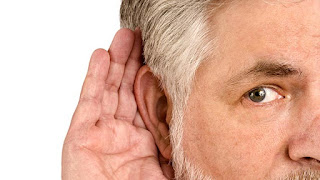PHYSICAL DISABILITIES
Persons
who are deaf or hard of hearing should have similar motor development and
skills as those with normal hearing unless vestibular function is affected.
That is, deafness alone does not affect motor abilities or balance function. In
fact, 93% of children with deafness have average to above average motor skills.
Environmental factors such as emphasis on physical skills in the school
curriculum, opportunities for practice and play, and parenting styles are believed
to influence physical development of children with hearing loss. Audiologists
should be aware of expected gross motor milestones in typically developing
children. If a child with hearing loss is not walking by 15 months of age, a
referral for further evaluation by a developmental psychologist or pediatrician
is warranted.
Vestibular
abnormalities that can result in gross motor problems include cochlear
malformations such as Mondini’s deformity and cochlear hypoplasia. Other
congenital causes of gross motor deficits in children with hearing loss include
syndromes such as CHARGE syndrome and Usher syndrome type I (described in a
later section) and CP. CP is a disorder of neuromotor function. Approximately
3% of children with hearing loss also have been diagnosed with CP, which is
characterized by an inability to control motor function as a result of damage
to or an anomaly of the developing brain. This damage interferes with messages
from the brain to the body and from the body to the brain. The effects of CP
vary widely from individual to individual. There are three primary types of CP:
· Spastic—characterized by high muscle tone
(hypertonia) producing stiff and difficult movement
· Athetoid—producing involuntary and
uncontrolled movement
· Ataxic—characterized by low muscle tone
(hypotonia) producing a disturbed sense of balance, disturbed position in
space, and general uncoordinated movement
· Quadriplegia—all four limbs are involved
· Diplegia—all four limbs are involved and
both legs are more severely affected than the arms
· Hemiplegia—one side of the body is
affected and the arm is usually more involved than the leg
· Triplegia—three limbs are involved,
usually both arms and a leg
· Monoplegia—only one limb is affected,
usually an arm
CP
is not a progressive condition. The damage to the brain is a one-time event.
However, the effects may change over time. For example, with physical therapy a
child’s gross and fine motor skills may improve with time. However, the aging
process can be harder on bodies with abnormal posture or that have had little
exercise, so the effects may result in a gradual decline in motoric ability. It
is important to remember that the degree of physical disability experienced by
a person with CP is not an indication of his or her level of intelligence.
The
brain damage that caused CP may also lead to other conditions such as learning
disabilities or developmental delays. Approximately 20% of children with CP
will also experience hearing or language problems. The hearing loss is
typically sensory/neural in nature. In addition, between 40% and 75% of
individuals with CP will also have some degree of vision deficit.
Special
Testing Considerations
Individuals
with motor delays may not respond behaviourally to auditory stimuli because
their physical disabilities limit their ability to orient to sound. However, when
testing children, VRA can still provide reliable information even for those
with poor head and neck control. Modifications that might need to be made in
the test arrangements for VRA include the use of an infant seat to provide
additional head support. However, audiologists should ensure that head supports
do not block the ears and impede sound field stimuli. If children with motor
difficulties cannot make a head-turn response to sound, response modifications
can be made. Modifications include alternative responses such as localizing to
the sound stimuli with their eyes as opposed to head turns. CPA might also
require modifications. Response modifications might need to include options
that do not require the use of fine motor skills. Examples of such
modifications could include asking a child to drop a ball into a large bucket
rather than having the child insert a peg in a pegboard, partial hand raising,
or even just a head nod. Additionally, a variety of gross motor responses can
be used to trigger an electronic switch that will, in turn, activate a computer
screen programmed for appropriate visual reinforcement.
If
the physical disability has a neuromotor component, such as with CP,
physiological measures might be affected. That is, abnormality in measures such
as the auditory brainstem response (ABR) may be misinterpreted as indicative of
hearing loss when, in fact, the abnormality is in neurotransmission. Therefore,
interpretation of the ABR must be made cautiously and in concert
with
the entire battery of auditory tests, behavioral and physiological. Sedation
may be required when conducting ABR with individuals who have CP in an attempt
to relax their head and neck or to reduce extraneous muscle movements, thus
reducing myogenic artifact.

No comments:
Post a Comment